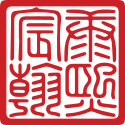
Back Kangzi Afrikaans كانغ شي Arabic كانج شى ARZ کانقشی AZB Кансі Byelorussian Кансі BE-X-OLD ཁང་ཞི། (གོང་མ།) Tibetan Kangxi Catalan Kŏng-hĭ Huòng-dá̤ CDO Kchang-si Czech
| Kangxi Emperor 康熙帝 | |||||||||||||
|---|---|---|---|---|---|---|---|---|---|---|---|---|---|
 | |||||||||||||
| Emperor of the Qing dynasty | |||||||||||||
| Reign | 5 February 1661 – 20 December 1722 | ||||||||||||
| Predecessor | Shunzhi Emperor | ||||||||||||
| Successor | Yongzheng Emperor | ||||||||||||
| Regent | |||||||||||||
| Born | 4 May 1654 Jingren Palace, Forbidden City, Beijing | ||||||||||||
| Died | 20 December 1722 (aged 68) Changchun Garden, Imperial Gardens, Beijing | ||||||||||||
| Burial | Jing Mausoleum, Eastern Qing tombs | ||||||||||||
| Spouses | |||||||||||||
| Issue Detail | |||||||||||||
| |||||||||||||
| House | Aisin-Gioro | ||||||||||||
| Dynasty | Qing | ||||||||||||
| Father | Shunzhi Emperor | ||||||||||||
| Mother | Empress Xiaokangzhang | ||||||||||||
| Seal |  | ||||||||||||
| Kangxi Emperor | |||||||||||||||||||||
|---|---|---|---|---|---|---|---|---|---|---|---|---|---|---|---|---|---|---|---|---|---|
| Chinese name | |||||||||||||||||||||
| Chinese | 康熙帝 | ||||||||||||||||||||
| |||||||||||||||||||||
| Mongolian name | |||||||||||||||||||||
| Mongolian Cyrillic | Энх амгалан хаан | ||||||||||||||||||||
| Mongolian script | ᠡᠩᠭᠡ ᠠᠮᠤᠭᠤᠯᠠᠩ ᠬᠠᠭᠠ | ||||||||||||||||||||
| |||||||||||||||||||||
| Manchu name | |||||||||||||||||||||
| Manchu script | ᡝᠯᡥᡝ ᡨᠠᡳᡶᡳᠨ ᡥᡡᠸᠠᠩᡩᡳ | ||||||||||||||||||||
| Möllendorff | Elhe Taifin Hūwangdi | ||||||||||||||||||||
The Kangxi Emperor (4 May 1654 – 20 December 1722), also known by his temple name Emperor Shengzu of Qing, personal name Xuanye, was the fourth emperor of the Qing dynasty, and the second Qing emperor to rule over China proper. His reign of 61 years makes him the longest-reigning emperor in Chinese history and one of the longest-reigning rulers in history.[1] He is considered one of China's greatest emperors.[2]
The third son of the Shunzhi Emperor, Kangxi was enthroned at the age of seven while actual power was held for six more years by the Four Regents nominated by his father.[3] After assuming personal rule, Kangxi's attempt to revoke the fiefdoms of feudal princes sparked the Revolt of the Three Feudatories, which he suppressed. He also forced the Kingdom of Tungning in Taiwan and Mongols in the north and northwest to submit to Qing rule, and launched an expedition that incorporated Tibet into the empire. Domestically, he initially welcomed the Jesuits and the propagation of Catholicism in China, but tolerance came to an end as a result of the Chinese Rites controversy. Later in his reign, Kangxi became embroiled in a prolonged succession dispute. He died in 1722 at the age of 68 and was succeeded by his fourth son, who assumed the throne as the Yongzheng Emperor.
The Kangxi Emperor's reign brought about long-term stability and relative wealth after years of war and chaos. He initiated the period known as the High Qing era (or the "Prosperous Era of Kangxi and Qianlong"),[4] spanning the reigns of the Kangxi Emperor, his son Yongzheng, and his grandson Qianlong. His court also accomplished such literary feats as the compilation of the Kangxi Dictionary, the Complete Tang Poems poetry anthology, and the Complete Classics Collection of Ancient China.
Cite error: There are <ref group=lower-alpha> tags or {{efn}} templates on this page, but the references will not show without a {{reflist|group=lower-alpha}} template or {{notelist}} template (see the help page).
- ^ "Emperor Kangxi - The Emperor Who Reigned for the Longest Period in Chinese History". Cultural China. Archived from the original on 21 March 2013. Retrieved 21 March 2013.
- ^ Magill, Frank N.; Taylor, Larissa Juliet, eds. (2006). Great lives from history (First ed.). Pasadena, CA: Salem. ISBN 978-1-587-65222-6.
- ^ "NOVEMBER 9, 2018 BY - The Kangxi Emperor". Columbia University. 9 November 2018.
- ^ Rowe (2009), p. 63.